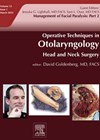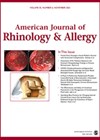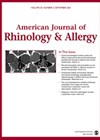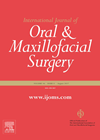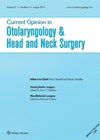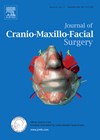
Journal Reviews
Exciting advances in facial reanimation
Despite several techniques for reanimation after facial paralysis, the management of these patients continues to challenge us. This paper reviews advances in facial reanimation surgery, provides updates on the timing of intervention, modifications to the traditional gracilis muscle transfer, other...
Why do some people get their smell back so quickly after a COVID infection whilst others don’t?
Of course, we are all too familiar with the effect that COVID-19 infection has on our sense of taste and smell, but why do most patients get better whilst, for many, the misery lingers on and on? This paper looks...
Serum biomarkers for CRSwNP
This cross-sectional comparative study looked at 50 patients with nasal polyps who, at the time of diagnosis, also had a blood test evaluating serum total IgE, IL-17 and Pentraxin-3. The study assesses whether these blood markers are useful in the...
Automated contouring of costal cartilage for pinna reconstruction – a proof of concept
Presently there are limited applications of automation within operative ENT. This proof-of-concept study explores the use of an augmented robot to contour cadaveric costal cartilage for auricular reconstruction. Ordinarily this task is performed manually. This takes considerable time due to...
Antibiotics in orthognathic surgery
This paper from the Netherlands looked at 137 patients over a one-year period, 18 of whom had Le Fort I procedures, 68 bilateral sagittal split surgery, and 51 bi-maxillary surgery. A further 54 surgical procedures were undertaken, including 15 having...
Functional considerations in reconstruction after laryngectomy
With a plethora of different reconstructive options and techniques available after laryngectomy, it can be difficult to clearly see which give the lowest complication rates and best functional outcomes. This article aims to summarise the current evidence in swallowing and...
Bone thickness and split pattern in mandibular osteotomies
This paper looked at 63 sagittal split ramus osteotomy sites. The type of split was classified according to the Plooij paper and bone measurements were taken at four sites. Of these sites, the thickness of the bone in one point,...
Patient factors associated with spontaneous CSF leak
This article highlights the role of obesity, sleep apnoea and raised intracranial pressure as linked pathologies in the aetiology of the spontaneous cerebrospinal fluid (sCSF) leak. The authors link sCSF leak with obesity and comment on sCSF leak incidence increasing...
The search for the holy grail of rhinosinusitis: another step towards phenotyping in CRS wNP?
For many years, scientists and clinicians have been trying to understand the infinite variability within the term ‘rhinosinusitis’ using radiology, basic science, epidemiology and then using their insights to solve the riddle of management: how to explain why some patients...
Using autologous blood to reduce postoperative infections
The removal of impacted wisdom teeth is a common surgical procedure with possible complications including postoperative bleeding and wound infection and alveolar osteitis. Preventing osteitis is dependent on retaining the blood clot in the socket with no infection. There are...
Risks of tracheostomy in head and neck cancer
Tracheostomy is associated with several complications, with rates quoted as high as 8-45%, including: bleeding; displacement; obstruction; surgical emphysema; pneumothorax; fistulae and failure to decannulate. There are now many studies that confirm the increased length of stay and complications of...
Rib grafts for mandibular reconstruction
Reconstruction of the mandible following ablation requires good bone stock to allow optimal function and the placement of dental implants. In the developed world, vascularised bony flaps are accepted as the gold standard but these may not be widely available...

